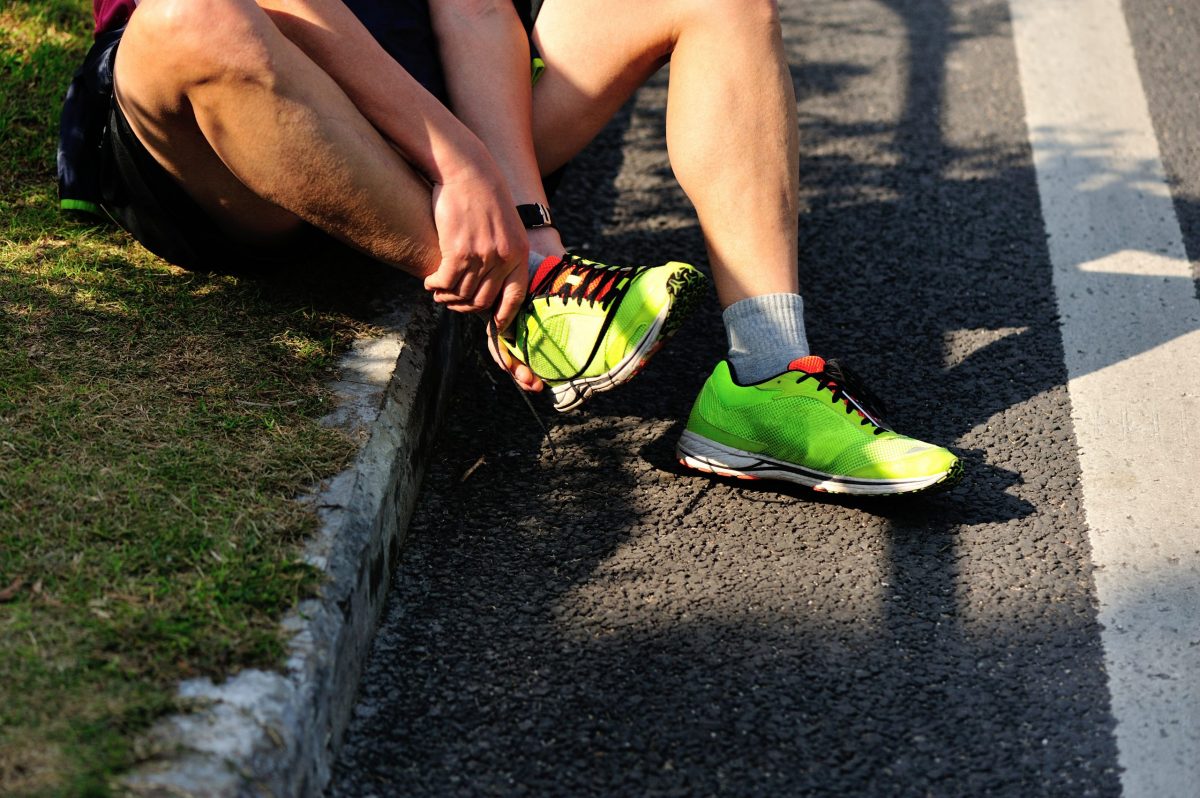
On Your Mark, Get Set, Stretch!
But what about “go?”
Many runners, athletes, and sports enthusiasts are often so concerned with the “go” aspect that they forget how to prepare for the “go.”
Running remains one of the most popular ways Americans improve their fitness, with 10% to 20% running regularly. Even if you do not consider yourself a dedicated runner, the act of running is usually an integral part of any sport, workout, or physical activity (especially when you are in a rush).
Running injuries can occur to various body parts, such as the hip, knee, leg, ankle, foot, and even spine. Evidence suggests that 40% to 50% of runners experience injuries yearly. To help keep runners of every level safe, the Sports Medicine Team at EmergeOrtho–Triangle Region specializes in healing running injuries and preventing them.

Top Ten Injury Prevention Tips for Running
Take a look at some helpful tips for preventing running injuries, suggested by our EmergeOrtho–Triangle Region fellowship-trained Sports Medicine Specialists.
1. Stretch Before and After Running
Before subjecting your muscles to vigorous activity such as running, stretching and warming up the body is vital. There are two types of stretches: dynamic and static.
Dynamic stretches are active stretches that resemble exercises to improve range of motion, loosen the muscles and joints, and increase blood flow. Dynamic stretches can help prevent injury and, if done regularly, can also improve power and performance.
In addition to pre-running dynamic stretches, you should do static stretching after your run. Static stretches involve standing, sitting, or laying in place and holding a stretch for an extended period. Your muscles are at their warmest and most flexible after a run/workout, so stretching them at this point will improve your overall flexibility, reduce muscle soreness, prevent muscle cramps, and decrease the chances of injury.
2. Stay Hydrated
Staying hydrated before, during, and after running is one of the most important things a runner can do. Water regulates your body temperature, lubricates your joints, transports nutrients, and keeps energy and stamina high. Dehydration can lead to muscle fatigue and cramps, dizziness, and other serious conditions, like heat illness.
The American Council on Exercise suggests the following for water consumption before, during, and after exercise:
- Drink 17 to 20 ounces of water two to three hours before you start exercising.
- Drink 8 ounces of water 20 to 30 minutes before you start exercising or during your warm-up.
- Drink 7 to 10 ounces of water every 10 to 20 minutes during exercise.
- Drink 8 ounces of water no more than 30 minutes after you exercise
3. Gradually Increase Duration & Distance
Many people may be inclined to push themselves to their limits when beginning a run, but a gradual progression is key to preventing injuries. If your muscles are not used to running for long periods and far distances, overexerting them can lead to an unexpected strain or sprain. Everyone is different, but running experts recommend that training volume, distance, duration, and intensity increase 5% to 10% per week.
4. Incorporate Strength Training
Strength training provides a multitude of benefits to runners. It improves posture and joint stability, conditions your joints and muscles, keeps your body properly aligned, and reduces muscle fatigue. Incorporating a full-body strength-training program that gradually increases reps and weight will help prevent common running injuries.
5. Find Proper Running Shoes
Running shoes are not a one size fits all product. Besides the fact that people need different sizes, many people have particular needs that their running shoes should meet. Having the correct running-shoe fit often means the difference between sustaining an injury or not. With the wrong shoes, runners can develop plantar fasciitis, shin splints, hip injuries, knee injuries, calf injuries, and ankle injuries. Given that running shoes are essential equipment to a runner, purchasing a well-fitted pair that suits your foot shape and supports your running style is vital.
6. Obtain a Gait Analysis
A gait analysis is an in-depth look at the way your body moves when you run. It analyzes an individual’s level of mobility, stability, flexibility, and functional strength. It will not only help identify improper techniques or dysfunctional movement patterns, but it will also help you identify which running shoes are best for you and your needs.
7. Cross-Train
Even with proper technique and incorporating injury-prevention exercises, running can take its toll on the body. To reduce that toll, it is important to take periodic breaks from running and switch it up with other methods of aerobic exercise.
8. Take Advantage of the R.I.C.E. Method
R.I.C.E. stands for rest, ice, compression, and elevation. When you have muscle aches or joint pains, this technique is crucial to injury prevention. When done immediately at the start of symptoms, it can relieve pain, reduce inflammation, protect damaged tissues, and speed up the healing process.
9. Run on an Even Surface
Running on uneven or hard surfaces, such as concrete, steps, or rock formations, can throw off your balance and cause excessive impact to your joints. Find a level, softer surface, such as dirt trails, bike paths, or treadmills.
10. Listen to Your Body
Some injuries are instantaneous, but others are gradual and happen over time. Your body usually emits signals to let you know that something is wrong, but it is up to you to listen to your body’s signs and take appropriate action. If you suspect you are suffering from any injury-related symptoms, it is essential to stop running and rest until the symptoms disappear. If they do not disappear, we encourage you to visit us so we can diagnose the issue.
If you have any questions or would like a private consultation with one of our Sports Medicine Specialists at EmergeOrtho–Triangle Region on creating a customized running injury prevention plan, self-schedule an appointment by clicking here. Or, call us at any time at (919) 220-5255.







